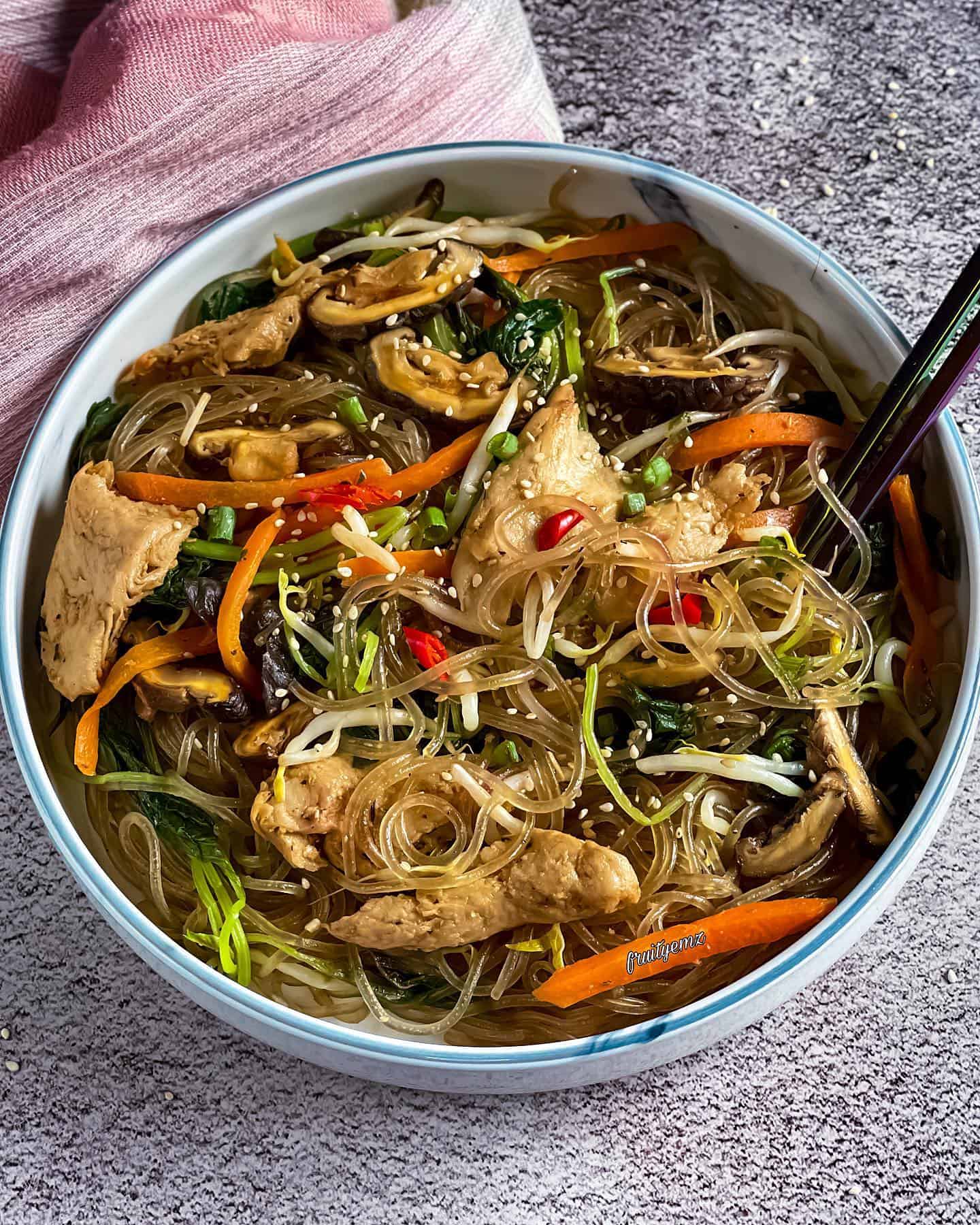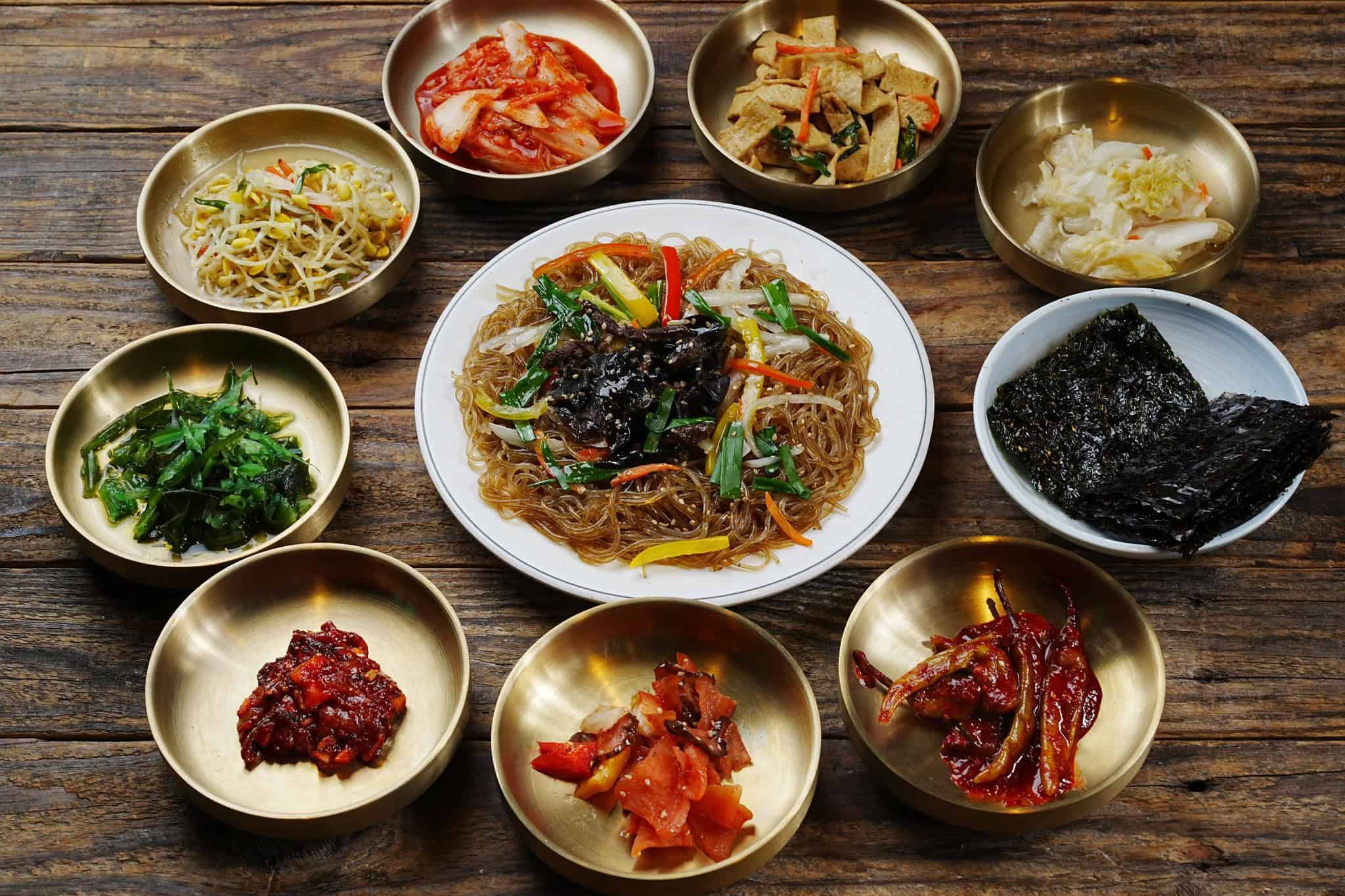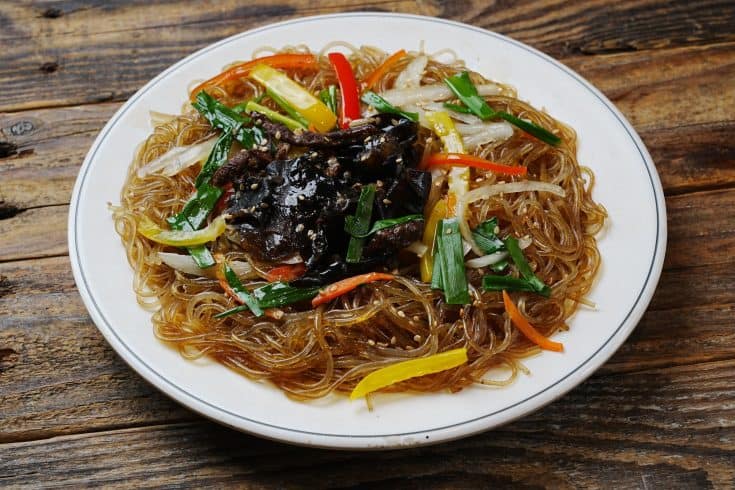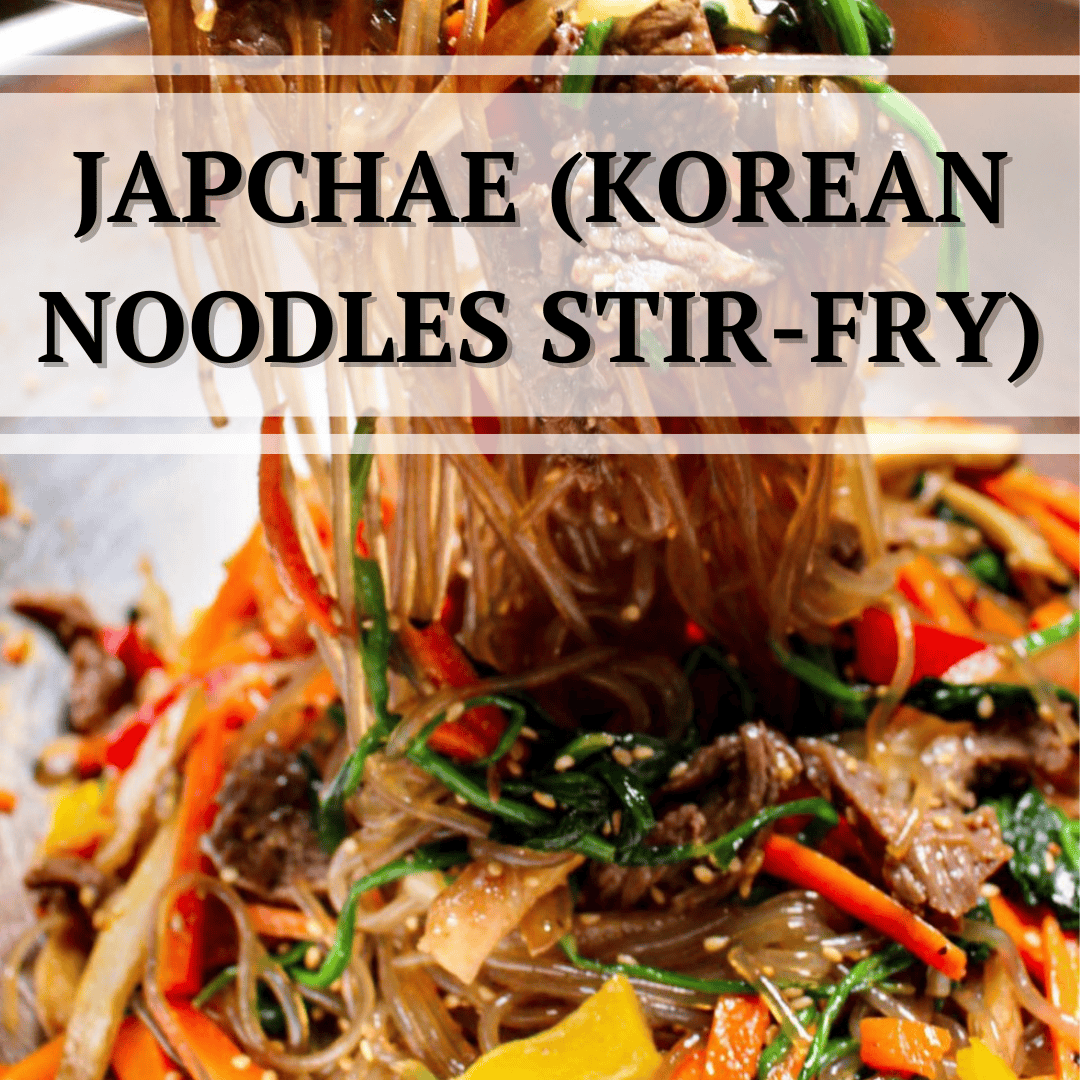Japchae is a Korean glass noodle stir-fry that’s savory, lightly sweet, and bursting with vegetables. The noodles—made from sweet potato starch—are chewy and glossy, soaking up the soy-based sauce beautifully.
It’s one of those dishes that tastes restaurant-quality but is surprisingly easy to make at home.
The beauty of Japchae is how customizable it is. You can load it with colorful vegetables, add your favorite protein, or keep it simple and vegetarian.
What is Japchae?
Japchae (잡채) literally means “mixed vegetables,” though noodles are now the star ingredient. Traditionally served during Korean celebrations, Japchae combines sweet potato glass noodles (dangmyeon) with a medley of sautéed vegetables, soy sauce, and sesame oil.
The sauce strikes that perfect balance of salty, sweet, and nutty—something that makes Japchae stand out among Asian noodle dishes.
Tips for Cooking and Prepping
When cooking Japchae, timing and layering matter most. Here’s what I’ve learned over time:
Cook the noodles just right.
I like to boil the glass noodles for 6–7 minutes until chewy, then rinse them in cold water and cut them with kitchen scissors. It keeps them manageable and prevents clumping.
Sauté ingredients separately.
Each vegetable releases different moisture. I cook them individually for the best color and texture, then toss them together at the end.
Balance the seasoning.
Don’t be afraid to taste as you go. The sauce should taste a little stronger before mixing—it mellows out once everything combines.
Add sesame oil last.
It gives Japchae that signature aroma. I drizzle it in after removing the noodles from the heat so the flavor stays bright.
Recipe Variations and Substitutes
Japchae is incredibly flexible. You can adapt it based on your pantry or dietary needs:
Make it vegetarian or vegan.
Swap the beef for mushrooms—shiitake or king oyster mushrooms have a wonderful meaty texture. Use soy sauce instead of oyster sauce and skip the egg garnish.
For additional protein and fiber, I sometimes add tofu cubes and enoki mushrooms as well.

Change up the veggies.
Bell peppers, spinach, carrots, onions, and mushrooms are traditional, but zucchini, cabbage, or snap peas also work great.
Try different proteins.
If you eat meat, use thinly sliced beef, chicken, or even shrimp. This isn’t traditional, but adding spam adds another layer of saltiness and umami that elevates that dish further.
Making Ahead, Storing, and Reheating
Japchae keeps well, which makes it an excellent meal prep option.
Storage
Store in an airtight container in the fridge for up to 4 days. Let it cool fully before sealing to prevent sogginess.
Reheating
Warm in a skillet over medium heat or microwave in short bursts with a splash of water. The noodles tend to firm up when cold, but they’ll soften again once reheated.
Freezing
You can freeze Japchae for up to 2 months, though the texture of the noodles may change slightly after thawing. I recommend freezing the sauce and cooked veggies separately if you want the best results later.
What to Serve It With
Japchae can be a meal on its own or a side. It pairs perfectly with grilled meats like bulgogi or galbi, or with simple banchan (Korean side dishes) such as kimchi and cucumber salad.
If you’re keeping it vegan, serve it with sesame tofu or sautéed mushrooms for extra protein.

FAQs
Can I make Japchae vegan?
Yes! Just skip the egg and use tofu or mushrooms instead of meat. The sauce itself is naturally vegan, so you don’t need any special substitutions.
Can I make Japchae ahead of time?
Of course! Japchae is one of those dishes that actually tastes better after resting for a few hours; the flavors deepen beautifully. Just reheat gently before serving.
What noodles should I use for Japchae?
Authentic Japchae uses dangmyeon, Korean sweet potato glass noodles. You can find them at Asian grocery stores or online. They turn translucent and chewy once cooked.
Can I add meat to Japchae?
Absolutely. Thinly sliced beef (like bulgogi-style) or chicken works perfectly. Just cook it first, season lightly, and mix it in with the noodles.
Japchae Korean Glass Noodle Stir-Fry

Image credit: @odarijip
Ingredients
For the Noodles
- 8 oz (225 g) Korean sweet potato noodles (dangmyeon)
- 1 tablespoon sesame oil
- 1 teaspoon soy sauce
For the Vegetables
- 1 small onion, thinly sliced
- 1 carrot, julienned
- 1 red bell pepper, sliced
- 2 cups spinach leaves
- 1 cup shiitake or oyster mushrooms, sliced
- 2 green onions, chopped
For the Sauce
- 3 tablespoons soy sauce
- 2 tablespoons sugar
- 1 tablespoon sesame oil
- 1 teaspoon minced garlic
- 1 teaspoon rice vinegar (optional)
- 1/2 teaspoon black pepper
For the Optional Toppings
- 1 egg, beaten and cooked into a thin omelet, sliced into ribbons
- Sesame seeds
- Extra chopped green onions
Instructions
- Cook the noodles. Boil dangmyeon in salted water for 6–7 minutes until chewy, then drain, rinse with cold water, and toss with sesame oil and soy sauce to prevent sticking.
- Cook the vegetables. Sauté onion, carrot, bell pepper, mushrooms, and spinach separately in a little oil until just tender; season lightly with salt.
- Make the sauce. In a small bowl, whisk together soy sauce, sugar, sesame oil, garlic, rice vinegar, and black pepper until dissolved.
- Combine everything. In a large pan or bowl, mix the noodles, cooked vegetables, and sauce. Toss well until glossy and evenly coated.
- Serve and garnish. Transfer to a serving plate, top with sesame seeds, green onions, and optional egg ribbons. Serve warm or at room temperature.
Featured image credit: @ahnestkitchen

